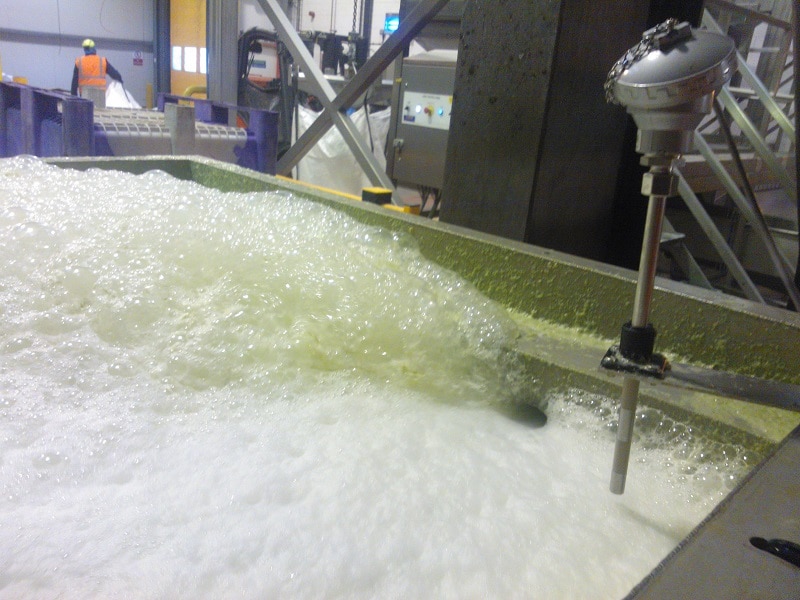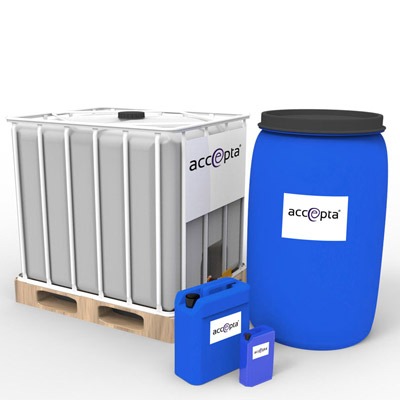How to Achieve Ideal Foam Control for Improved Manufacturing Performance
How to Achieve Ideal Foam Control for Improved Manufacturing Performance
Blog Article
The Function of Foam Control in Enhancing Product High Quality and Performance
Foam control is an often-overlooked yet important element in the quest of product quality and functional performance across diverse industries. By effectively managing foam development, firms can not just improve the uniformity of their formulas but also take on functional difficulties that can impede productivity. This conversation will certainly explore the multifaceted influence of foam on both item honesty and manufacturing processes, raising essential inquiries regarding the techniques that can be utilized to optimize foam control. As we take into consideration these effects, it comes to be clear that the risks are more than they might originally show up.

Recognizing Foam Development
Foam formation is a complicated sensation that can dramatically influence product high quality and functional efficiency throughout various markets. Understanding these variables is vital for managing foam successfully.
The fluid's viscosity and surface stress play critical duties in foam stability. Surfactants, for example, can minimize surface area tension, promoting bubble development but likewise improving foam security, which can be problematic in specific applications. In addition, mechanical frustration, temperature fluctuations, and the existence of contaminations can exacerbate foam generation, making it important to check these aspects during production procedures.
Industries such as food and drink, pharmaceuticals, and chemical manufacturing should be especially attentive relating to foam control. By realizing the hidden devices of foam development, companies can apply targeted approaches to reduce its effects, thus protecting operational efficiency and ensuring consistent item performance.
Effect on Product Quality
The presence of foam can significantly compromise item quality across various industries. In making procedures such as food and beverage, pharmaceuticals, and cosmetics, too much foam can cause inconsistent product formulations. In food manufacturing, foam may trap air, influencing texture and flavor, which can inevitably modify customer understanding and fulfillment.
Furthermore, foam can prevent the harmony of paints and coverings, resulting in issues like bubbles and unequal finishes. In pharmaceutical applications, foam can conflict with the precise application of liquid medications, possibly impacting healing effectiveness and patient security. These quality problems not only reduce the end product's allure however can additionally bring about costly recalls and damages to brand track record.
Additionally, the visibility of foam can complicate top quality control steps, making it hard to achieve specific measurements and constant outcomes. Efficient foam control not only alleviates these threats but likewise boosts overall item quality by making sure that solutions meet rigid sector standards. By investing in foam control methods, companies can protect their products, improve consumer complete satisfaction, and preserve an one-upmanship in the industry.
Operational Challenges From Foam
Efficient procedures in numerous sectors can be severely disrupted by the existence of foam, which positions several obstacles throughout manufacturing procedures. Foam can hinder mixing and reaction times, hindering the effectiveness of chemical procedures. In markets such as food and drink, foam formation can result in incorrect fill levels, resulting in product waste and disparities in packaging.

In environments where health is critical, such as pharmaceuticals and food processing, foam can complicate cleaning protocols, creating hidden reservoirs for contaminants. This not only raises quality concerns but additionally can bring about conformity concerns with governing requirements.
Moreover, the mental effect on drivers can not be forgotten; too much foam can produce a chaotic work setting, bring about lowered spirits and performance. In summary, dealing with the operational obstacles postured by foam is important to preserving effectiveness and product quality in numerous markets.
Techniques for Effective Foam Control
How can sectors successfully mitigate the difficulties positioned by foam? Effective foam control techniques are important for boosting product top quality and functional performance. One primary strategy is making use of defoamers, which are chemical representatives designed to get rid of or reduce foam development. Picking the proper defoamer requires a thorough understanding of the specific procedure problems and the products included.
Along with chemical services, procedure optimization plays a crucial function in foam administration. Industries can evaluate and readjust criteria such as mixing temperature Clicking Here level, rate, and stress to decrease foam generation. Executing devices adjustments, like setting up foam-breaking gadgets or adjusting container design, can even more help in reducing foam degrees.
Routine tracking and evaluation of foam behavior within production processes are likewise essential. Making use of innovative sensing units and analytics can give real-time data, enabling for timely interventions and adjustments. Staff training is equally essential; guaranteeing that workers are well-informed regarding foam dynamics and control techniques can lead to proactive foam monitoring.
Instance Researches and Market Applications
While several sectors deal with special difficulties associated with foam control, instance researches expose that customized techniques can considerably enhance both product quality and functional performance. In the pharmaceutical field, for instance, a leading manufacturer implemented a custom foam control technique that reduced foam development during fermentation procedures. This innovation not just improved return by 15% however also decreased contamination dangers, guaranteeing greater product integrity.
In a similar way, in the food and beverage sector, a major milk producer challenged extreme foam during pasteurization - Foam Control. By presenting a specialized antifoam agent, they reduced processing time by 20%, which straight translated to boosted throughput and try this website reduced energy consumption. The application of foam control gauges ensured constant product appearance and taste, strengthening brand name loyalty
In the chemical manufacturing market, a case research study highlighted the successful application of foam control in wastewater treatment procedures. The application of a real-time surveillance system allowed drivers to readjust antifoam dosage dynamically, causing a 30% reduction in chemical use and improved effluent high quality.
These instance studies show the varied applications of foam control across markets, stressing its essential role in improving product top quality and operational effectiveness.
Verdict
In conclusion, efficient foam control is essential to enhancing product quality and functional performance throughout different industries. Eventually, focusing on foam control contributes to boosted productivity, safeguarding brand name online reputation, and increasing customer satisfaction, highlighting its value in top quality assurance within manufacturing procedures.
Foam control is an often-overlooked yet crucial component in the useful source quest of product top quality and functional efficiency throughout diverse sectors. Personnel training is equally important; ensuring that employees are well-informed concerning foam characteristics and control techniques can lead to aggressive foam management.
While many sectors deal with unique difficulties related to foam control, situation studies disclose that tailored techniques can considerably boost both product top quality and operational effectiveness (Foam Control). In the pharmaceutical sector, for circumstances, a leading manufacturer carried out a custom-made foam control strategy that minimized foam development during fermentation procedures.In verdict, efficient foam control is indispensable to improving item high quality and operational performance across numerous industries
Report this page